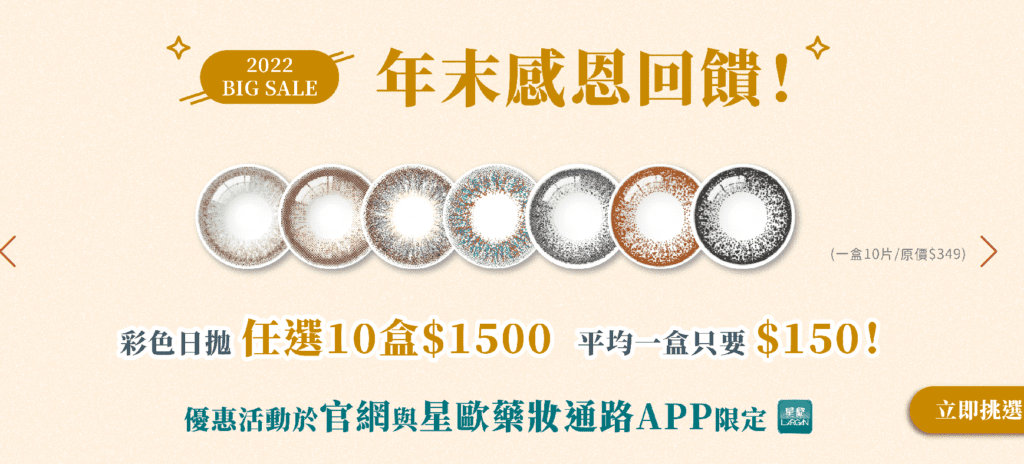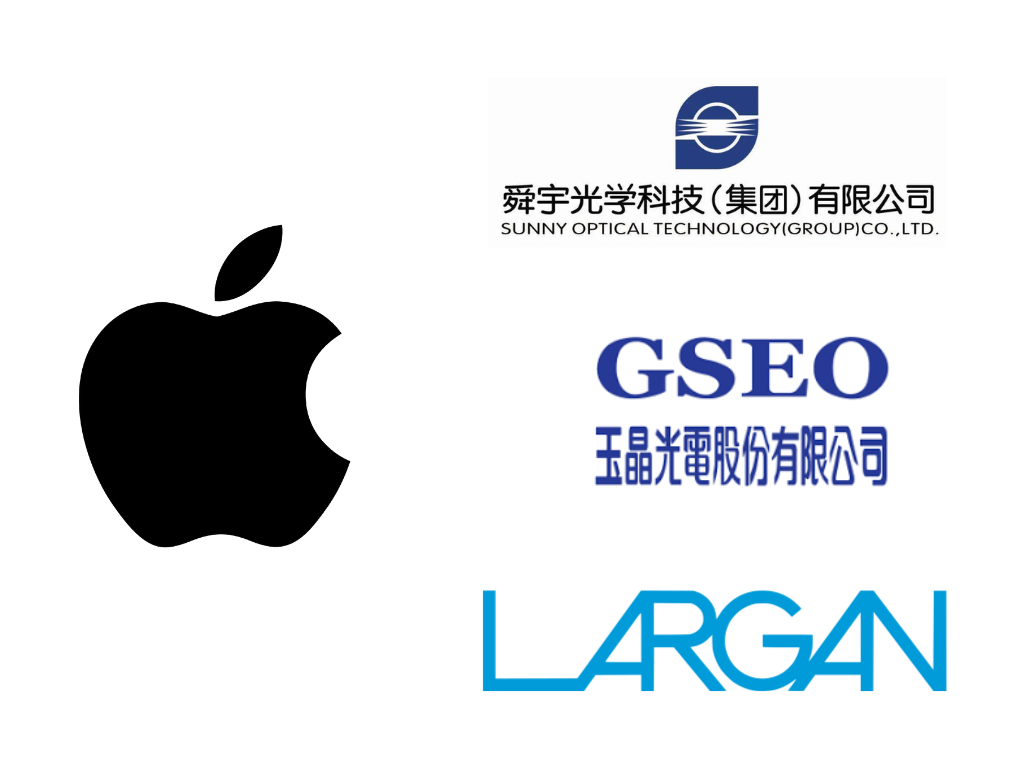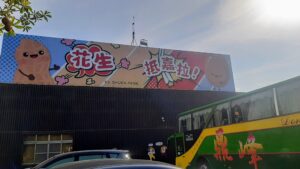A significant player in Apple’s supply chain, Largan Precision Co., Ltd is a seriously big deal within the tech industry. Which is surprising since it’s likely that you’ve never heard of them.
What is LARGAN Precision Co., Ltd?
Often stylized as Largan Precision or simply Largan, Largan Precision Co., Ltd (大立光電股份有限公司) is the largest manufacturer and biggest supplier of camera lenses for 3C products (smartphones, tablets, and laptops) in the world, rightly earning the self-description as the “global leader in plastic aspherical lens design and production”.
Originally established in Taichung (central Taiwan) in 1987 by founders Scott Lin and Tony Chen, the company has since grown into the manufacturer for high-grade optical lenses. Such lasting dominance is attributed to the company’s initial focus on developing plastic lenses, at a time when the rest of the industry was stuck on glass lenses.
As it turned out, glass lenses were great for actual cameras like Kodak, just not so much for the advent of camera phones and tablets. This of course proved an issue in the early 2000s when such technology became the mainstream.
Largan, however, was ready. For the past 20 years it had been developing high-grade lens specifications, gathering patents, and steadily building up renown within the industry, just in time to take the mobile devices sector by storm.
And boy, has it.
What Largan products are there?
Although the company’s main output is camera lenses for 3C devices, Largan Precision also specializes in the production of several other products through subsidiary branches. In fact, the actual scope of Largan products is better defined by the following questions:
Contact Lenses

That’s right, plastic optical lenses can also be used for contacts, though it’s not recommneded to start breaking up your iPhone to test this out.
Headed under the subsidiary branch ‘Largan Medical Co., Ltd’, LARGAN contact lenses come in a range of colors, styles, and practicalities. As such, they’re widely stocked in health and cosmetics stores like Watsons and Cosmed (like CVS without the food), as well as health care institutions like the island-wide optician’s 大學眼睛 (University Optician’s).
LARGAN Sleep Monitoring Products

Mobile devices and contact lenses are not the only tricks LARGAN Precision has up its sleeves. In addition to Largan products helping people see, the company has also ventured into helping people sleep with their subsidiary ‘Largan Health AI-Tech Co., Ltd’.
LARGAN Voice Coil Motors
Largan Digital, another subsidiary of Largan Precision, focusses on producing Voice Coil Motors (VCMs), and primarily manufacturers open loop and close loop products.
That said, the main focus for the company could still be argued to the internationally acclaimed lenses from LARGAN Precision that have found their way into the Apple’s supply chain.
What is Largan Precision’s relationship with the tech world?
It isn’t some fluke that has propelled Largan to the top of the industry. Their products truly are the best in the world – at least for what’s currently on offer.
The highest-grade mass produced plastic lens currently available on the market is the 9P lens. This type of lens is made up of nine lenses stacked atop each other, an engineering feat that gives enhanced definition to the product it’s applied to.
Although Apple’s hasn’t yet adopted it into their iPhone series and are still continuing steadily with the 7P lens, you can bet that other smartphone giants have bought into such specifications.

And Largan supplies lenses for them all.
What is Largan Precision’s relationship with Apple?
For many years, Largan Precision has acted as Apple’s go-to rear camera supplier.
In the month of October 2022 alone, Largan Precision reported revenues of NTD $5.213 billion, much of which can be attributed to the release of Apple’s new iPhone 14 series the previous month.
Though the company’s global market share of smartphone camera lenses has atually fallen by 5% over the past couple years, Largan still commands 25% of the market share and on average produces over 200 million lenses a year. With these figures, it is clear that the company has enjoyed and will continue to enjoy tremendous success.
So, what can be attributed to such global dominance?
How has Largan Precision stayed atop the plastic optical lens industry?
While I abhore the overused phrase in education of “practice makes perfect”, for the case of Largan this could never be truer. The company’s continuous and rigorous efforts to innovate have placed Largan Precision at the very top of the optical lens industry, reaching what some would argue to be true perfection – at least in relation to plastic optical lenses.
However, even after reaching such heights, Largan Precision still puts significant effort into maintaining these three advantages:
1. Technological lead on the competition
Largan was incredibly fortunate to have focussed their efforts from an early age on plastic optical lens production. By the time others started to follow suit, Largan had already established a considerable generational head-start and a definite technological lead on the rest of the industry.
This technological lead has carried into the present. Where other optical lens vendors are developing 6P and 7P lenses, Largan is already mass producing 8P and 9P lenses, even developing how to scale 10P lenses. Though other vendors are slowly catching up, such technical prowess is hard to imitate.
In the meantime, Largan has become the go-to lens supplier for smartphone manufacturers, including Huawei, Vivo, and Oppo, thereby increasing the industry’s reliability on Largan’s high quality lenses, and decreasing the opportunities for emerging competition.
2. High IP threshold
Since the company was founded, LARGAN Precision has managed to garner over 2,000 patents for their designs. This vast number has secured LARGAN’s place within the industry by forcing other vendors to find alternative methods and designs for similar products. It might also be an effective method to scout future competition.
LARGAN’s readiness to protect its intellectual property has, in part, ensured its continuity of producing innovative products, many with extremely high specifications.
3. High specifications
In 2019, LARGAN was the first to enter the “blue ocean” with the periscope lens in Huawei’s P30 Pro. This effectively raised the bar for future specs, while simultaneously increasing the price differentiation between LARGAN’s products and the competition.

Although LARGAN’s technology lead, vast number of patents, and high-quality specs have, in the past, been what has made this company a stable and powerful force, other vendors are catching up. With that said, how long can we expect LARGAN to keep ahead of the pack?
What challenges is LARGAN currently facing?
Though LARGAN’s strengths have enabled a strong solidification of its position within the market, the company has faced a number of growing issues, including:
1. Limited sales for high-end smartphones
Although the revenue result recorded following the release of the Apple iPhone 14 series doesn’t show it, LARGAN has been impacted by the limited sale of high-end smartphones for many years now.
With much of the company’s exports being high-grade lenses – such as 7P or 9P, for more expensive high-end smartphones – the company has become limited in its scope in comparison to competitors. This has caused a disadvantage when smartphone manufacturers have decided to release lower-end specifications for handsets, limiting LARGAN’s input.
2. Weakening relationship with Apple
While a defining strength in the past, in recent years LARGAN’s relationship with Apple has soured and even become a hindrance to effective performance.
Apple’s reliance on LARGAN, a company that has never bowed down to allowing the American company to audit its plants, is wavering as Apple turns to others that are more willing to bend to them – like Chinese supplier Sunny Optical.
This shift in favoritism of suppliers to Chinese companies has contributed to LARGAN losing a fair share of the market, and this margin is only expected to grow more in the future.
Who are Largan Precision’s main competitors?

With a history of filing lawsuits against much of the industry, it is fair to think that LARGAN considers themselves to be in competition with the entire optical lens sector. In reality, and in the past 5 years, the company has more frequently been in dispute with just two competitors:
Genius Electronic Optical (玉晶光)
Long considered as LARGAN’s main competitor, Genius is another Taiwan-based optical lens supplier for Apple. With its ability to scale 4P to 7P lenses for medium to high-grade products – this makes up about 65% of the company’s total shipping – Genius poses a fairly considerable threat to LARGAN’s control over the market, and as an Apple supplier.
However, unlike LARGAN who supplies for several different smartphone manufacturers, Genius relies on Apple to make up 90% of its revenue. This caused a significant problem when Apple’s quality control found coating cracks on Genius’ supply of rear lenses for the iPhone 14, resulting in a transfer of 10 million lens orders from Genius to LARGAN.
With Genius’ struggle to appropriately – and accurately – scale their high-end lenses, it is evident that the distance is widening between Genius and LARGAN. It will be interesting to see if, after this year, LARGAN still considers Genius one of its primary competitors.
Sunny Optical Technology (舜宇光學科技)
In 2016, LARGAN supplied 80% of all iPhone lenses. Much has changed since then.
China’s Sunny Optical, a new face to Apple’s supply chain in 2021, has already taken the crown of being the largest supplier of 7P wide camera lenses for the iPhone 14 series. While this is clearly threatening LARGAN’s position within the Apple supply chain, the company does still retain a higher ASP of 7P lenses which has minimized the impact on this year’s profits.
But how long can this last? Both companies are already providing similar shipment allocations of high-end lenses and low-end lenses to Apple. And there’s even rumors that Sunny will become the main supplier of ToF lens (Time-Of-Flight lenses are used for depth definition) for the iPhone 15 series in 2023.
If such predictions do indeed come to fruition, there is no doubt that Apple’s new alliance with Sunny Optical will have significant repercussions on LARGAN.
Other industry competitors and lawsuits
With over 2,000 patents, it seems almost as if LARGAN has made it a hobby to sue other optical lens vendors. Here are some notable lawsuits you might not be aware of:
- Ability Opto-Electronics Technology (先進光電)
Starting in 2013, Ability (another Taiwan-based company) was sued by LARGAN for theft of trade secrets. Involving, among others, four former LARGAN employees, this lawsuit was finally settled in 2021 after an appeal by Ability in 2017. Had they not appealed, the individuals in question would have had to jointly pay NTD $1.522 million and spend 5 to 6 months in jail.
- Samsung (2013), Newmax Technology Co. (新鉅科), and HP Inc. (2019)
Each of the companies above were all sued in violation of patent usage for notebook camera, albeit not at the same time.
- Motorola Mobility
Part of the Chinese Lenovo Group Ltd. (聯想), Motorola was sued in 2021 for its usage of wide angled lenses – a product that LARGAN has a patent for.
It is clear through these numerous examples that LARGAN Precision will continue to go to any length to protect their intellectual property and retain their dominance within the industry.
Is LARGAN losing its dominance?
LARGAN Precision’s global and national command of the optical lens industry, both industrially and commercially, has gained widespread acclaim and attention. It therefore cannot be argued that LARGAN has enjoyed profound success in its field.
However, as previously mentioned, it will be interesting to see how long LARGAN’s dominance will be able to last. With competitors nipping at its heels, and the challenge of maintaining and developing higher specifications, one might say that LARGAN’s clear lead is starting to falter.
Indeed, Apple’s favoritism for more supple competitors has seen a distinct change in LARGAN’s position within the mobile giant’s supply chain. While not yet felt, this transfer in power has the potential to wreak considerable damage in the future.
It is additionally unlikely that LARGAN will be able to continue proving its invincibility to this challenge through an IP war, as it has done so many times before. Though this Taiwanese giant has thus far controlled and challenged the market, ever pushing the bar higher at what can be achieved, it will be interesting to see how much LARGAN can do so, especially if the company’s disadvantages and competition accumulate and grow more significant in the future.




Comments
Such a nice and detailed article!